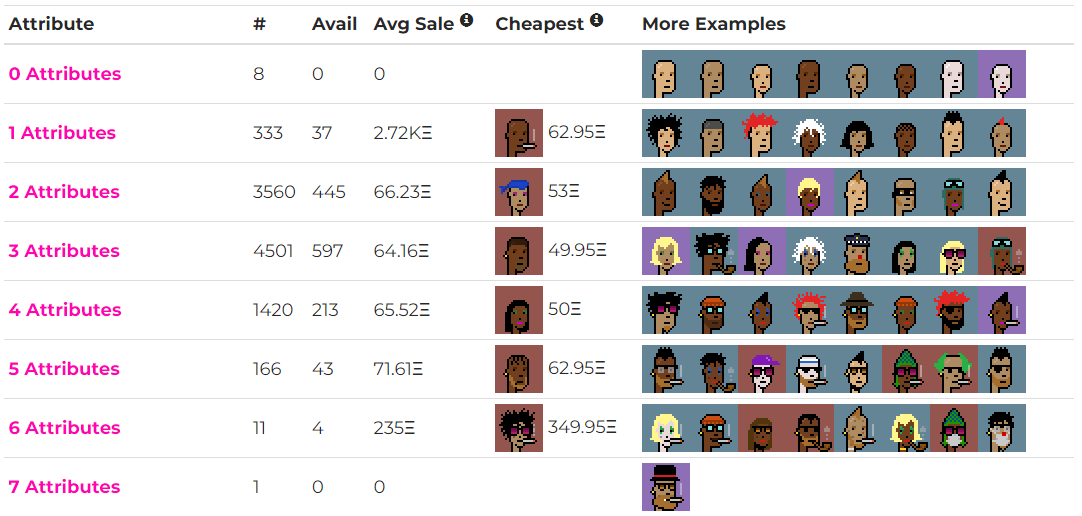CryptoPunks, Bored Apes, Doodles — these are just a few of the countless influential profile picture (PFP) or, generative avatar projects that live within the continuously growing non-fungible token (NFT) ecosystem. Yet, while PFPs have undoubtedly become the frontrunner of the current NFT market, many people have been left wondering what these PFPs are, and why they exist in the first place.
As generative avatar projects continue to grow in popularity, and the debate surrounding whether or not NFTs truly need utility persists, we believe it’s time to shed some light on how PFP NFT collections came to be in the first place. Here’s what you need to know.
It all starts with art
PFPs live at the intersection of collectibles and generative art. They’re collectibles in the sense that they usually come in large quantities (10,000 or so) and have varying degrees of rarity, somewhat similar to trading cards.
Yet, PFPs are also generative. They are created using a simple plug-and-play method in which users load a variety of traits — like body type, head shape, background color, etc. — into an application that will in turn randomly compile vast quantities of NFTs. But these traits have to come from somewhere, which is why PFPs always start with art.
If we retrace the steps of popular projects like Bored Apes, Doodles, and Cool Cats, it’s clear to see that PFP endeavors always begin with an artist (or artists). In the case of the three aforementioned projects, those artists were Seneca, Burnt Toast, and Clon, respectively.
Once an artist has joined the cause and the creative vision is set, PFP projects become somewhat of a modular process throughout the planning and development phases. You’re likely to have seen a statement to the effect of “all 10,000 NFTs were generated from over XXX number of traits” as part of the marketing language for many PFP projects. This is where the ‘generative’ part of generative avatars comes into play.
Putting the pieces together
Once the project team has decided on a subject (ape, cat, duck, etc.) it’s time to figure out how to create the many thousands of NFTs that will form the finished collection. To do this, the project developers (devs) need to create a sort of jigsaw puzzle that can be assembled many times over via computer.
Each NFT needs to be broken down into parts before it can be assembled as a whole, so the lead artist of the project must create a multitude of traits like body type, head shape, facial expression, accessories, arm position, background color, and more. For reference, check out generative NFT ranking website Rarity Tools’ breakdown of all the top Bored Apes traits.
Aside from the simple creation process, artists have to consider the canvas placement of each attribute so that once assembled, the full composition will make sense, yielding a single, cohesive NFT avatar. This means creating each NFT character in layers to ensure that ears, noses, eyes, and accessories sit right on the head of the avatar, and the head must sit right on the body, and so on.

With these layers separated out, devs are able to load each and every trait into a program (like Python) or write a bit of code that can mix and match the traits to quickly create single NFTs. The programs used vary depending on the team as well as whether or not they hope to generate each avatar beforehand or in real-time during the minting process.
More often than not though, after a few generative trial runs to work out any potential errors, devs will then generate the full supply of 10,000 or so unique, non-duplicated (but sometimes very similar) NFTs. Thanks to this plug-and-play method, it has become incredibly easy to create a 10,000 supply PFP project.
Releasing PFPs into the wild
The final step in the PFP process is both the most public and likely best understood in the project pipeline. This is of course releasing these bright and shiny new PFP NFTs. As previously mentioned though, the final release is dependent on whether or not NFTs will be generated during mint, or pre-generated and loaded into a sort of randomized, first-come-first-serve grab bag.
Releasing a project entails creating a website, setting up a smart contract, testing the minting functions of both the website and the smart contract, deciding on a sale method, setting a release date, starting price, and more. Above all else, the release of a project is quite possibly the most important event of all. For a high-level summary of the technical side of releasing a PFP collection, read security researcher Harry Denley’s post on the subject here.
Smart contracts and file hosting/sharing aside, this final step mostly comes down to whether or not the project team can generate hype, cultivate a following, and deliver a solid product to their potential collectors. We’ve seen collections time and time again (Mekaverse, Pixelmon, etc.) create obscene amounts of hype only to fall short of their potential.
The public sale has a lot to do with the overall perception of the project. Of course, whether or not the generative NFTs look good plays into things, but rollout mechanics including whitelisting and pre-sales, dutch auctions vs. releasing in waves, etc. all play a huge role in how a project is perceived.
If this all goes smoothly, and the collection sells out quickly, collectors are likely to be much more pleased with the process and the product — as opposed to when projects, like Akutars, charge full speed into a sale and hit significant and debilitating roadblocks.
Considering the overwhelming success of Bored Apes and CryptoPunks, it’s no surprise that dev and artist teams everywhere have attempted to follow in their footsteps. Yet, while most derivative collections have come and gone, it seems that while the NFT market is saturated with PFP collections, originality still prevails. This is precisely why many PFP collections continue to stand the test of time.

